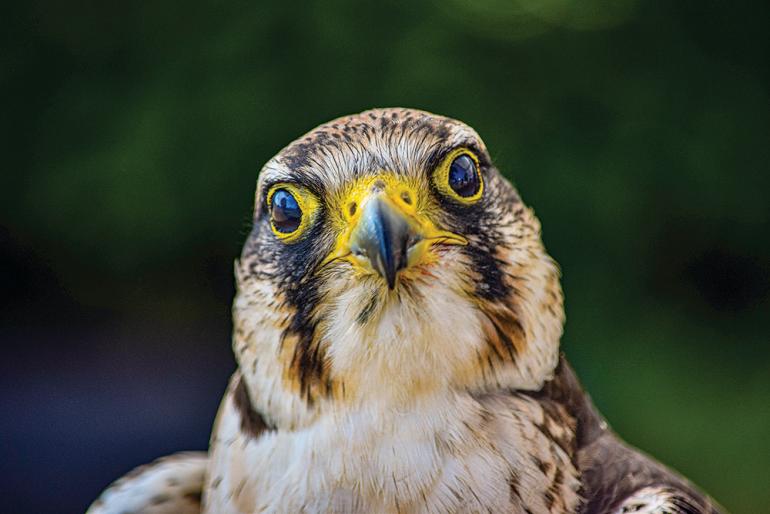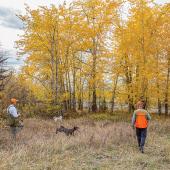Wingin' It
Breaking Down the raptors of southwest Montana.
It’s fair to say that most of us could learn a thing or two about our local birds of prey. Sure, there are the easy ones, like the mature bald eagle, osprey, and red-tailed hawk. But on average, when we go out for a hike, run, or drive and catch glimpses of avian silhouettes, how many times do we actually know what it is? There are over 30 species of raptors in Montana, many of which look remarkably similar to each other, depending on age, time of year, and sunlight. Without getting into too much detail, here’s a basic breakdown of how to categorize those flying predators that may be out and about this spring.
Eagles
The largest of them all and easiest to identify. These are the titans of the sky, with long wings and usually big, obvious heads. Unless it’s a vulture, if it looks like its wingspan could be bigger than you, it’s likely a bald or golden eagle. Most people mis-identify immature bald eagles, as their coloring resembles that of a golden. The best clue is habitat: balds tend to be near water, whereas goldens prefer dry, open country.
Buteos
The larger of the two hawk groups. Most buteos are noticeably smaller than eagles, but compared to other raptors, have big, broad wings, with labored wingbeats. The red-tail is a staple buteo of the Bozeman area. In the winter, rough-legged hawks migrate down from northern climes, but are usually on their way back by the time spring arrives. Other common buteos include the Swainson’s and ferruginous hawks.
Accipters
Still hawks, but smaller, with narrow tails and quick wingbeats. You’ll catch these mostly in a forest setting; look for rapid wing flutters followed by a glide. Accipters are generally smaller than buteos. Two accipters—the sharp-shinned hawk and Cooper’s hawk—look incredibly similar, with grayish blue backs and brick-red breasts. They size anywhere from a blue jay to a crow. Another—the northern goshawk—is more similar in size to a red-tail, except with long, tapered wings. Mature goshawks, though rarely seen, are hard to mistake. They have a slate-gray back with a trademark white eye-stripe and unique red eye.
Falcons
These are the speed demons, and among the smallest of the bunch. They have pointed wings, aerodynamic torsos, and long, narrow tails. Look for them on fenceposts, perched on cliff bands, or hovering out in the prairie. The American kestrel—Montana’s smallest raptor—is about the size of a robin and can be identified by its unmistakable blue-orange plumage. Other falcons include the merlin, prairie falcon, and peregrine falcon, which is famous for reaching diving speeds over 200 miles per hour.
Native Knowledge
Finding specific information on local birds can be difficult, so we did the work for you. Check out these resources for info & tips exclusive to Montana birds. —Molly Robinson
Publications
Birds of Montana Field Guide (Adventure Publications, $15)
Montana Birds: A Folding Pocket Guide to Familiar Species (Waterford Press, $8)
Birds of Montana (Buteo Books, $75)
Montana Outdoors: “16 Raptors That Every Montanan Should (Kinda) Know” and “The Herd and the Bird” (Montana Outdoors magazine, free online archive)
Organizations
Montana Wild Wings
Montana Raptor Conservation Center
Montana Audubon
Sacajawea Audubon Society
Yellowstone Valley Audubon Society
Montana Bird Advocacy
Websites
fieldguide.mt.gov
fwp.mt.gov
southwestmt.com/specialfeatures/birdingtrails/
Apps
Sibley Birds Second Edition, $19
Audubon Bird Guide, free
iBird, $3-$40
Merlin Bird ID, free
eBird, free
BirdsEye Bird Finding Guide, $1.50-$5














